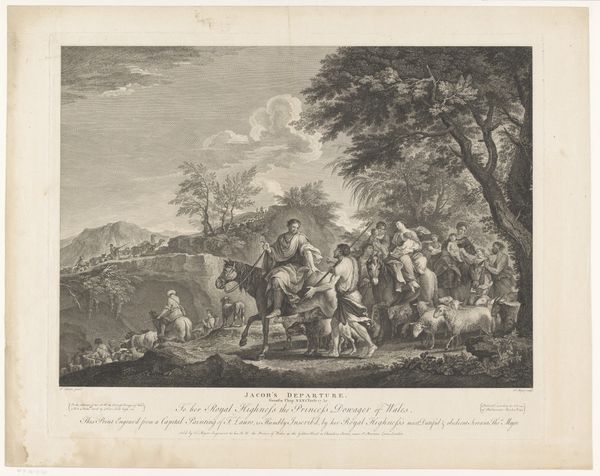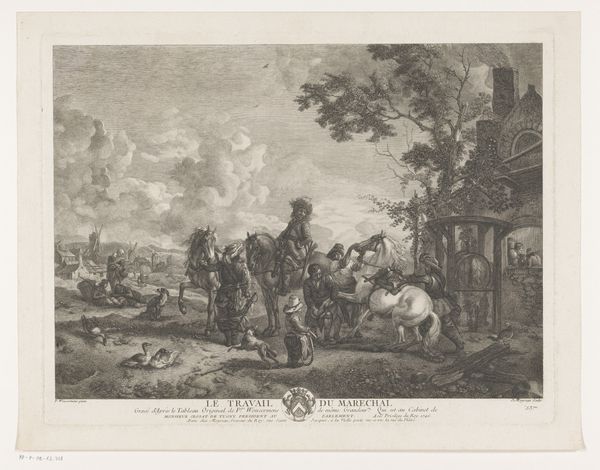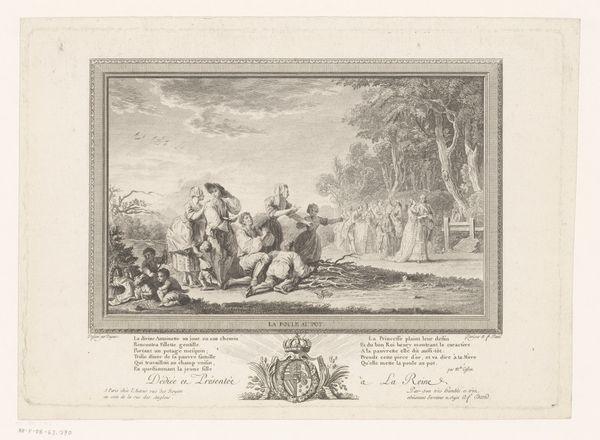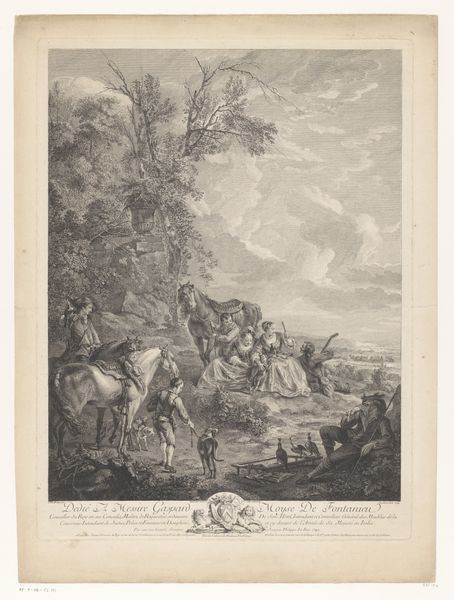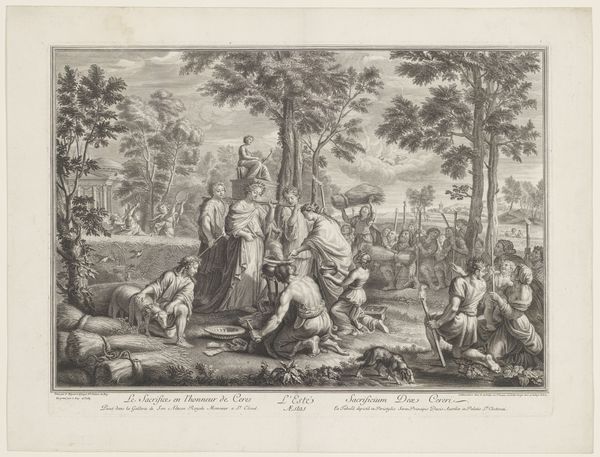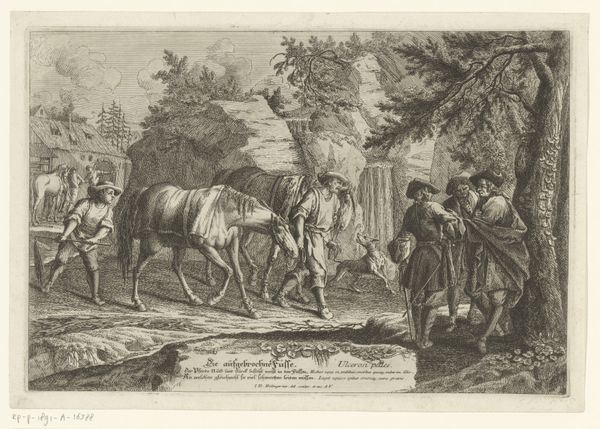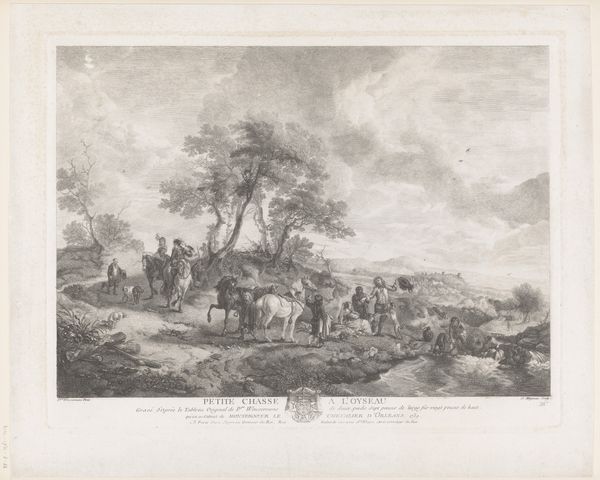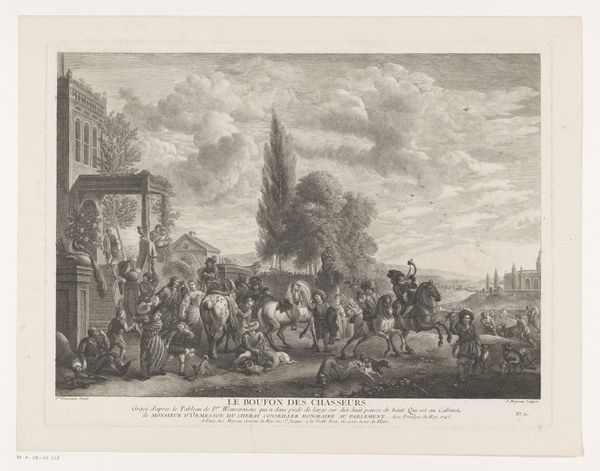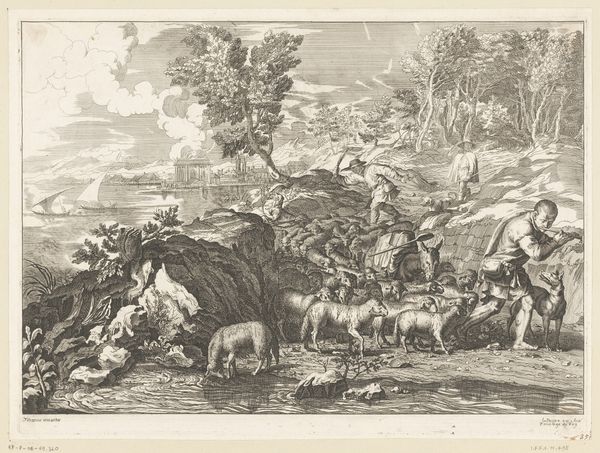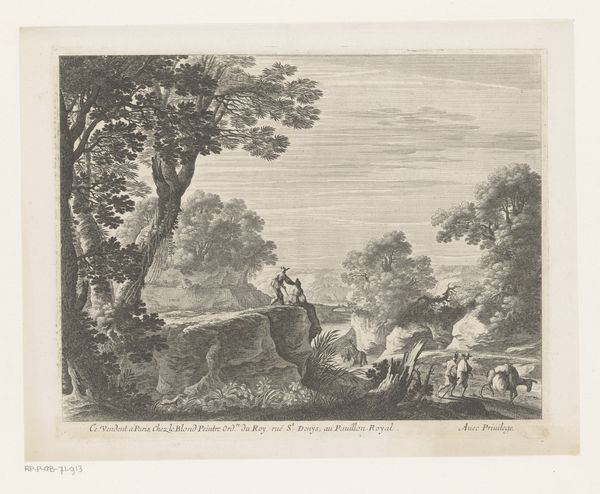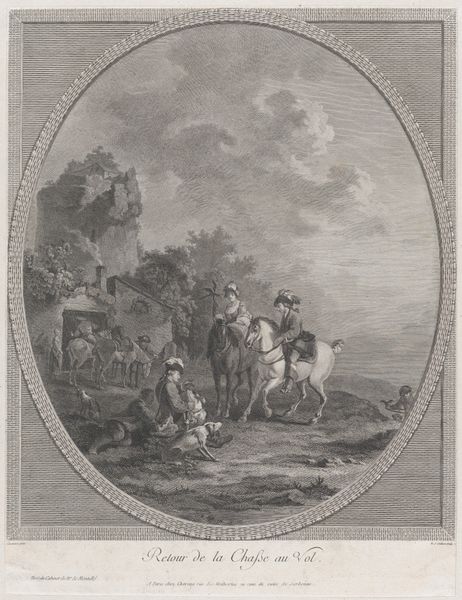
engraving
#
baroque
#
old engraving style
#
landscape
#
figuration
#
horse
#
19th century
#
genre-painting
#
history-painting
#
engraving
Dimensions: height 346 mm, width 446 mm
Copyright: Rijks Museum: Open Domain
Curator: Before us is “Jachttafereel,” a hunting scene engraving attributed to Pierre François Beaumont, created sometime between 1733 and 1769. Editor: My first impression is of stillness despite the supposed activity. The figures are meticulously placed, creating a composition that feels both detailed and strangely paused, like a tableau vivant. Curator: Indeed, it reflects a genre very popular at the time: celebrating aristocratic pastimes. Hunting wasn't merely a sport; it was a crucial display of power, a ritual woven into the fabric of courtly life and, therefore, courtly art. Beaumont, by reproducing this scene, catered to a market keen on maintaining those ideals. Editor: The meticulous rendering of the foliage, the varied textures—from the horses’ coats to the distant cloudy sky, achieved through a delicate cross-hatching. It's fascinating how much detail can be rendered through essentially linear means. It directs my eyes through the scene at a deliberately sedate pace. Curator: And look closer at those seemingly secondary figures: the servants, the families. Their positioning reinforces the hierarchy, placing the elegantly dressed hunters at the forefront of both the image and the social order. Engravings like these circulated widely, influencing perceptions of status. The artist signed his name in very small font towards the lower right, perhaps emphasizing the role of the engraving's commissioner and owner of the original painted tableau the engraving has been reproduced from. Editor: You're right. It makes me reflect on the role of engravings in disseminating imagery to a much wider audience. Did they truly understand these visual symbols of power, or did they see something else entirely? Regardless, I appreciate the technical mastery to evoke the textures, lighting, and tones despite the singular color. Curator: That distribution, that visibility is precisely what interests me. These images served a clear social function, not just an aesthetic one, solidifying specific roles and the unquestioned privilege for generations. The title translates from Dutch as 'Hunting Scene'. Even with its level of human figures and 'genre painting' touches, its still about capturing a moment, not really questioning it. Editor: Ultimately, both are part of the visual tapestry: a scene and its history.
Comments
No comments
Be the first to comment and join the conversation on the ultimate creative platform.
